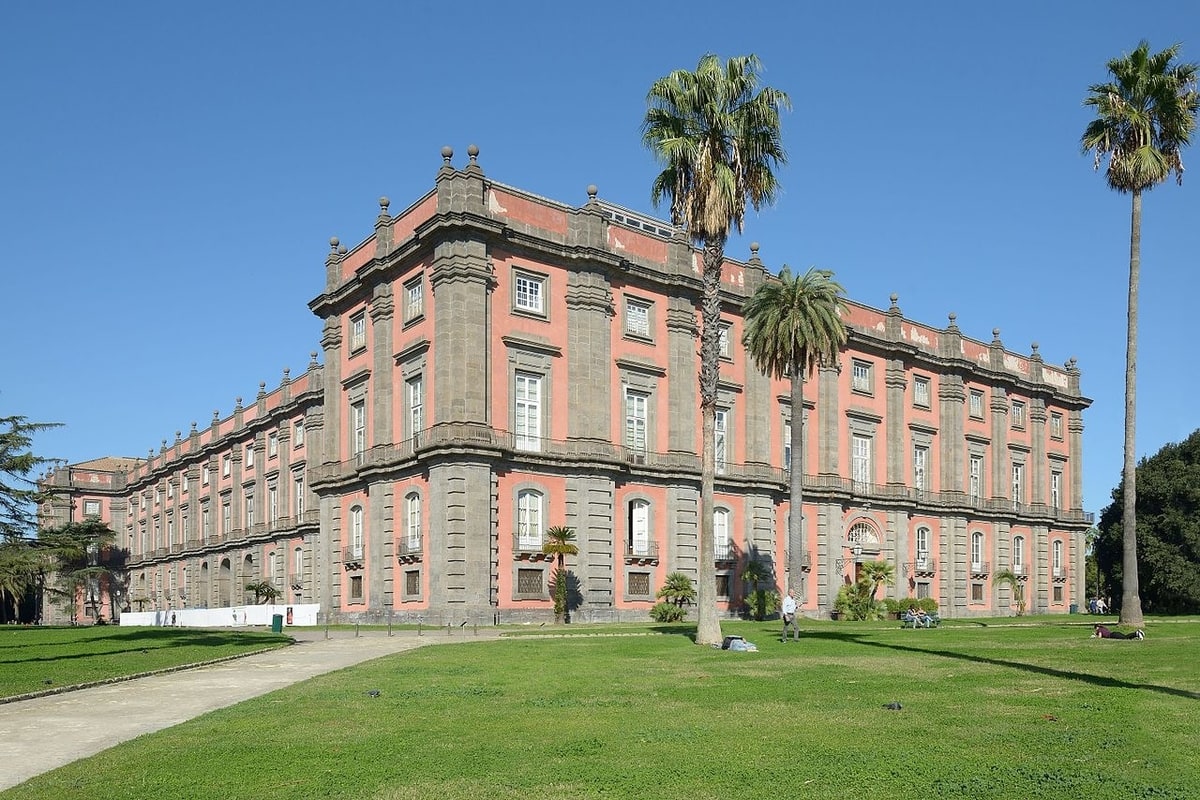


Embarking on a journey through the world of fine porcelain, one can’t help but come across the legendary name of Capodimonte. This Italian treasure embodies grace and sophistication, captivating collectors and art enthusiasts alike who seek out its exceptional beauty.
| Discover coastal serenity in our villa rentals Amalfi Coast, perfect for your Italian getaway. |
Yet, amid this admiration lies a common quandary: understanding what makes Capodimonte porcelain so extraordinary and how to identify its authentic works amidst numerous pieces that claim such heritage.
Crafted in the heart of Naples by royal decree in 1743, Capodimonte porcelain became an emblem of Italian ingenuity under King Charles VII’s patronage. With each piece telling a story wrapped in elegance, it’s no wonder that discerning connoisseurs are enchanted by these masterpieces.
Our article aims to unveil the allure behind Capodimonte’s esteemed collection—guiding you through its history, distinctive features, and timeless artistry.
By delving into this blog post, you’ll gain insight into what sets Capodimonte apart from other porcelains—a knowledge sure to enrich your appreciation for the finer things in life.
Discover their charm with us!
The Capodimonte porcelain manufactory took root under the patronage of Charles VII of Naples and Sicily, who later became his son Charles III, King of Spain. Driven by a passion for fine craftsmanship and his wife Maria Amalia of Saxony’s admiration for European porcelain styles, they established a hub of excellence at the Royal Palace of Capodimonte in Napoli.
Master artisans were summoned to create works that rivaled the celebrated Meissen Porcelain from Saxony and Buen Retiro Porcelain, originally produced in Madrid.
With meticulous attention to detail, these early craftsmen set a standard for quality that would define Capodimonte porcelain. They introduced distinctive techniques like unglazed biscuit porcelain and terraglia, capturing the essence of neoclassicism that was sweeping through Europe at the time.
Sculptor Giuseppe Gricci played a pivotal role in shaping this new art form with his innovative designs for figures, leaving an indelible mark on Italian porcelain history as he molded figurines breathing life into clay objects.
As we transition into exploring “Unique Characteristics of Capodimonte Art Pieces,” we unveil how each petal, leaf and cherub crafted in those days carries forth traditions cementing Capodimonte’s place among luxury art collectibles.
Capodimonte porcelain enchants with its marriage of intricate craftsmanship and ethereal beauty, a testament to an era when artistry reigned supreme. Each piece whispers a story of regal origins and meticulous creation, inviting admirers into a world where every delicate bloom and sculpted figure is steeped in history and elegance.
Capodimonte flowers bloom perpetually in the realm of Italian pottery. Crafted from the finest porcelain, these exquisite pieces capture the essence of nature’s delicate beauty. The skilled artisans at the Capodimonte factory pay meticulous attention to detail, shaping each petal and leaf with precision, eventually resulting in lifelike blooms that never wilt or fade.
Their colors are vivid, their textures almost soft to the touch; it’s easy to forget they’re made of porcelain.
Each flower tells a story of luxury and elegance, standing as a testament to centuries-old craftsmanship. As symbols of sophistication, they adorn palaces and private collections alike, bringing a touch of Naples’ rich artistic legacy into homes around the world.
Collectors cherish these blossoms as not just decorations but cultural objects and treasures; owning one is like holding a fragment of history in your hands.
As we admire the blossoming beauty of Capodimonte flowers, another masterpiece commands attention—the Centerpiece Urania. This extraordinary work is not just a display of florals; it captures the essence of luxury and sophistication inherent in Naples‘ finest porcelain.
Delicately handcrafted roses and orchids unfurl atop an ornate base, each petal and stem meticulously shaped by skilled artisans to mirror nature’s finesse.
The allure of the Centerpiece Urania lies in its ability to transform any space into a realm of elegance. The piece represents centuries-old traditions passed down through generations at the Museo di Capodimonte, where artistry meets perfection.
Its presence speaks volumes about the enduring charm and grandeur that only true craftsmanship can achieve—a testament to why porcelain from Capodimonte remains coveted by connoisseurs across the globe.
The Torriani Clock embodies the essence of luxury and intricate craftsmanship. Crafted with Murano glass, this timepiece captivates onlookers with its vibrant colored dial which is elegantly framed by floral applications in Capodimonte porcelain.
Each flower adorning the clock is hand-sculpted by skilled artists, standing as a testament to the detailed work iconic to this art form. No two pieces produced are created alike; they each tell their own story of creation and beauty.
Experience a fusion of tradition and creativity with the Torriani Clock, an exemplary representation of Capodimonte’s distinctive style. The porcelain details catch every flicker of light, showcasing an array of hues that breathe life into any room.
This clock isn’t just about telling time—it’s a conversation piece, elevating spaces with a touch of artistic expression that resonates elegance and sophistication unique to Italian cultural heritage.
Delve into the realm of Capodimonte’s masterpieces, where each porcelain piece stands as a testament to an enduring legacy of craftsmanship and artistry.
The Passion Rose Favor stands as a symphony of delicate artistry, its green rod, blue, and red flower meticulously painted and hand-carved by artists whose skills echo the grandeur of Capodimonte’s legacy.
Crafted in the hands of Naples’ finest artisans, this porcelain masterpiece emanates the romance and opulence that once graced the palace of Portici. Its petals are a whisper of luxury from an era where Ferdinand IV reigned supreme, a token from the kingdom where maiolica once captivated royal fascination.
Holding a piece like the Passion Rose Favor is akin to holding history itself—each curve, each hue representing centuries-old traditions passed through generations. This exquisite creation not only showcases exceptional craftsmanship but also embodies the regal essence associated with Napoleon’s unmatched dedication to excellence in porcelain art.
It serves as a testament to why Capodimonte remains distinctive among collectors and connoisseurs around Napoli e il mondo, offering an embrace to all who cherish timeless beauty fused with aristocratic elegance.
Crafted with the precision and skill that is the hallmark of Capodimonte craftsmanship, the Visentini Picture stands as an exquisite representation of beauty encased in porcelain. Its delicate roses and callas street bloom from a base interwoven with leaves and stalks, each petal and leaf articulated with finesse to bring forth nature’s splendor.
The ornamental framework of gilded wood adds a touch of regal elegance, hinting at its rich lineage tied to the Bourbon dynasty.
This remarkable piece not only captures the artistry inherent in southern Italy’s ceramic traditions but also embodies the union between figurative art, sculpture, and painting—a trio harmoniously blended in this unique composition.
Offered for sale through Capodimonte’s official e-store, it serves as both an artistic marvel for collectors around the world and a testament to Naples’ heritage within porcelain craft. Our journey through Capodimonte’s enchanting array continues next with another distinctive work – Pulcinella holding fruit.
Shifting from the elegant Visentini Picture, we uncover another Capodimonte treasure featuring the iconic Pulcinella. This porcelain of Capodimonte exemplifies mastery with its meticulously detailed figurine of Pulcinella surrounded by an abundance of fruit.
The statuette stands proudly on a circular base, highlighting Pulcinella’s traditional garb and playful persona—a testament to the craftsmanship echoing through Naples, Italy.
In this exceptional piece, every orange peel’s texture and grape bunch’s plumpness come to life under the artisan’s touch. Reflecting joy and abundance, “Pulcinella with fruit” embraces Neapolitan culture while showcasing the versatility and skill inherent in each Capodimonte creation.
Sophisticated collectors can appreciate how it mirrors the grandeur found within Farnese Collection pieces or those once housed in Royal Palace of Aranjuez—both representing historical luxury that still captivates today’s art world.
Capodimonte porcelain represents a pinnacle of artistic achievement in the realm of fine ceramics, embodying an era where craftsmanship and beauty converged at the highest levels. Born from the royal decree of Charles III, who would later become king of Spain, this exquisite art form originated in Naples—a city already famed for its vibrant cultural scene.
With Capodimonte’s creations, artists elevated mere clay into expressions of regal elegance that captured attention throughout Europe.
The legacy left by Capodimonte resonates even today as collectors and museums across the globe prize these pieces for their intricate designs and historical significance. Masters like Lorenzo Lotto and Correggio inspired the workshops’ painters while ancient Greek vases influenced forms, figures and decorations created.
In every petal-sculpted bloom of flowers or finely painted mythological scene rests an echo from Italy’s prolific past—melding classical grace with innovative techniques to set a new standard in decorative arts.
As we transition from understanding Capodimonte’s influence upon the art world, let us delve into how its unique contribution continues to define luxury within creative expression.
Marvel at the legacy factories of Capodimonte, where history merges with art in a dance of delicate porcelain. Envision these masterpieces gracing museums and private collections, whispering tales of Bourbon kings and Neapolitan splendor.
Collectors chase authenticity, longing to hold a piece of Italian craftsmanship steeped in centuries-old tradition. Each Capodimonte creation speaks volumes, casting an enduring spell on the world of fine arts.
Embrace this remarkable journey through time; let your senses revel in its unmatched elegance and cultural richness.
Capodimonte porcelain stands out for its intricate craftsmanship and historical roots, tracing back to the Real Fabbrica Ferdinandeain Naples under King Charles III’s rule.
King Ferdinand IV continued his father Charles III’s legacy by supporting the renowned Meissen Porcelain Factory, founded and nurturing the craft of delicate soft-paste creations in Italy.
Yes! You can admire these exquisite works at places like the Naples National Archaeological Museum, where they transport you back to a time of royal elegance and artistry.
The term “Capodimonte” refers to both advancements made in early factories such as Real Fábrica del Buen Retiro in Madrid and later factory developments around Naples, Italy – a testament to European ceramic evolution.
Capodimonte is celebrated for blending traditional Etruscan art with influences from titans like Titian and Parmigianino, symbolizing a crossroads of culture at dazzling royal courts like The Royal Palace of Aranjuez.
The porcelain room at the Capodimonte Museum showcases the grandeur of Capodimonte porcelain, highlighting its historical evolution and artistic significance. This room, adorned with exquisite pieces, represents the luxury and craftsmanship of Capodimonte flowers and other porcelain artworks.
Yes, Capodimonte artisans have crafted exceptional soup tureens that epitomize the intricate design and detailed artistry characteristic of Capodimonte porcelain. These tureens are not only functional but also serve as stunning decorative pieces.
Capodimonte porcelain includes remarkable renditions of historical battle scenes, capturing the dynamism and drama of warfare. These pieces reflect a blend of artistic excellence and historical narration, unique to the Capodimonte style.
The lush and diverse landscapes of the Naples area have inspired many Capodimonte porcelain designs. Artisans often depict natural scenes, flora, and fauna native to the region, bringing the beauty of Naples’ outdoors into their art.
Napoleon’s era marked a significant period for Capodimonte porcelain, with the fusion of Italian and French artistic influences. His reign saw the introduction of new styles and techniques in porcelain making at Capodimonte.
Capodimonte offers educational programs and workshops aimed at nurturing new talent in the art of porcelain making. These programs often include hands-on training and historical studies of Capodimonte’s rich artistic legacy.
Capodimonte porcelain is renowned for its nature-inspired designs, often featuring intricate landscapes, floral patterns, and scenes that capture the essence of Italy’s natural beauty.
Capodimonte has adapted to the modern market by blending traditional techniques with contemporary styles. Their pieces are sold internationally, catering to a global audience that appreciates luxury porcelain art.